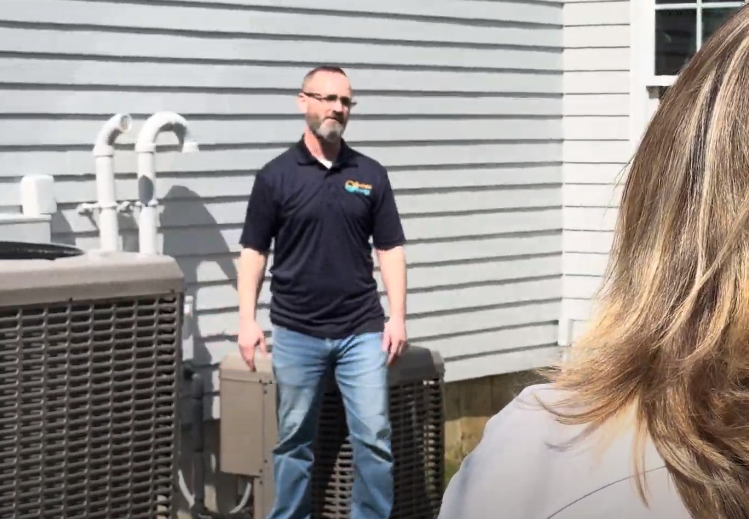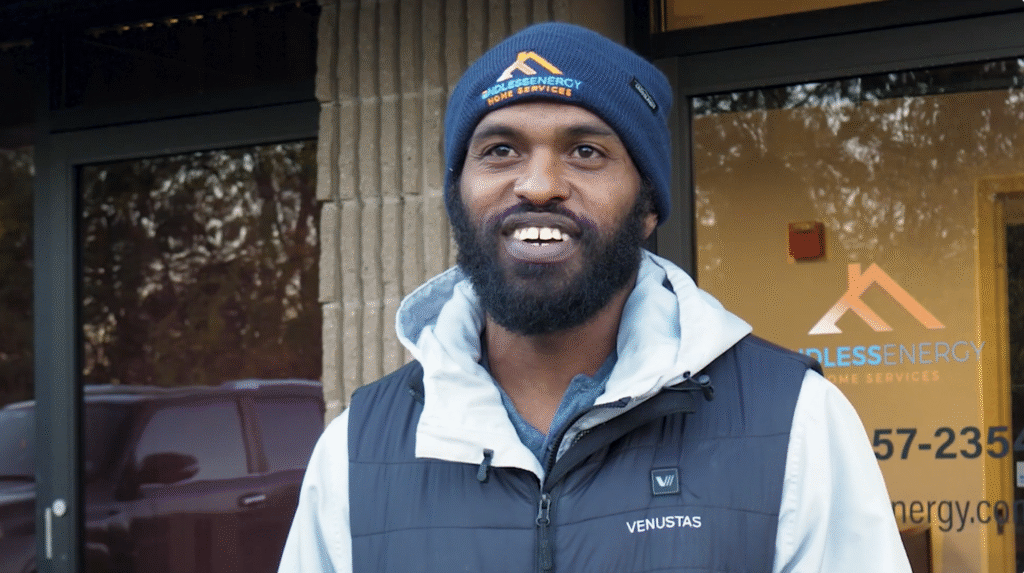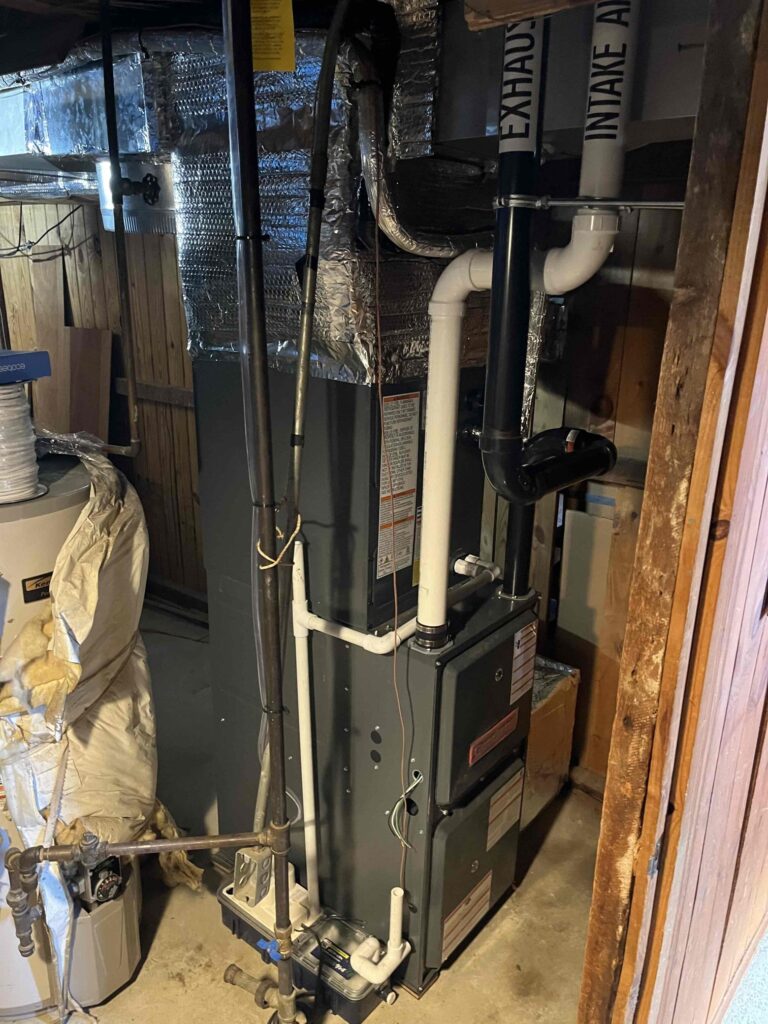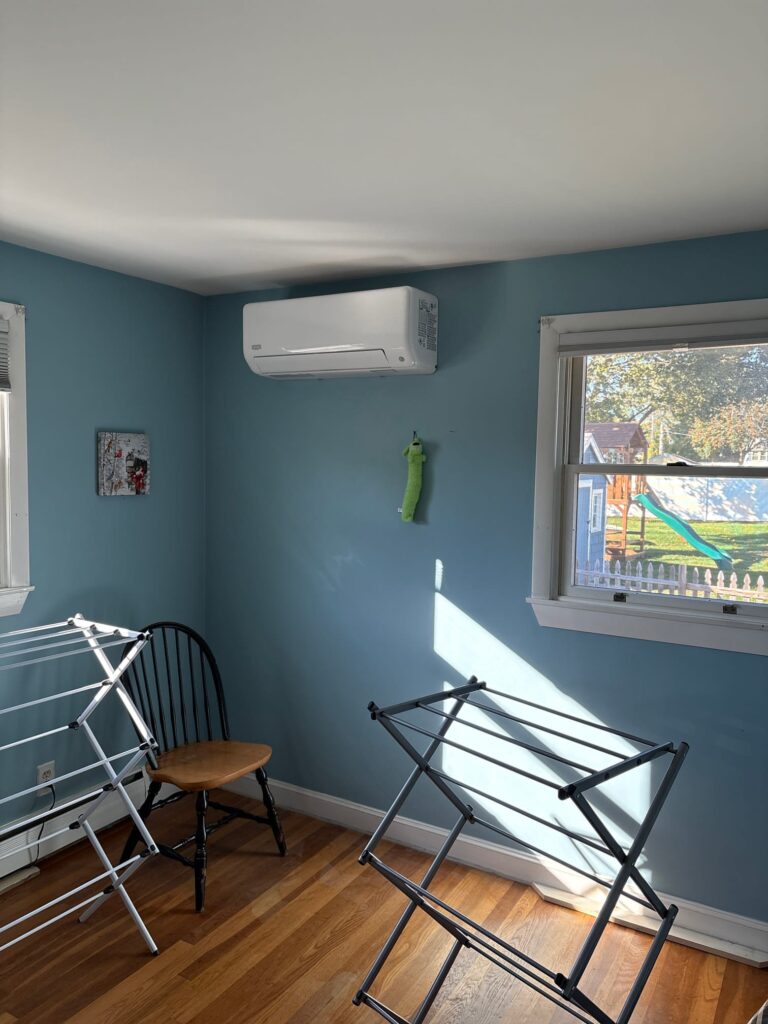It’s time to replace your HVAC system if it’s over 15 years old, shows a decline in efficiency, or results in rising energy bills. Frequent repairs and inconsistent temperatures are key indicators. High humidity levels, excessive dust, and increased allergy symptoms can also signal the necessity for a new system. Unusual noises like grinding, banging, or hissing point to malfunctioning parts. Poor air quality and hot or cold spots in your home suggest inefficiencies as well. Upgrading guarantees better performance and comfort. For a detailed explanation of each indicator, continue to uncover the specifics.

HVAC System Lifespan
The average lifespan of an HVAC system typically ranges from 15 to 20 years, depending on factors like maintenance frequency and usage intensity. To maximize this lifespan, you must adhere to a strict maintenance schedule. Regular inspections, cleaning, and timely repairs can prevent minor issues from escalating into major problems.
It’s essential to replace air filters every 1-3 months and make sure the coils, fins, and ducts are free from debris. An annual professional check-up can identify potential issues early, guaranteeing your system operates efficiently.
The HVAC installation process also plays a significant role in determining the longevity of your HVAC system. A poorly installed system can lead to a host of problems, including inefficient operation, frequent breakdowns, and reduced lifespan. Ensure your HVAC system is installed by a certified professional who follows industry standards.
Proper sizing of the unit, accurate ductwork, and correct calibration are essential steps during installation.
Efficiency Decline
Despite meticulous maintenance and proper installation, you’ll eventually notice a decline in your HVAC system‘s efficiency over time. This performance degradation is a natural consequence of wear and tear on the system’s components. Over the years, parts such as the compressor, fan motor, and evaporator coil experience stress and fatigue, leading to diminished operational efficiency.
One of the first signs of efficiency decline is longer runtime. Your HVAC system might take more time to reach the desired temperature, indicating that it’s working harder than it should. This increased strain not only reduces efficiency but also accelerates wear on the system’s components.
Another indicator is inconsistent performance. You may find that certain rooms are warmer or cooler than others, signifying uneven airflow and a struggling system.
Additionally, frequent repairs are a red flag. If you find yourself repeatedly calling in technicians to fix various issues, it suggests that the system is unable to perform at its best. These recurring problems can often be traced back to fundamental inefficiencies within the system.
Understanding these technical aspects of performance degradation and operational inefficiency will help you recognize when it’s time to replace your HVAC system, ensuring your home remains comfortable and energy-efficient.
Rising Energy Bills
You’ll likely notice a significant uptick in your energy bills as your HVAC system starts to lose its efficiency. This increase is often a clear sign that the system is experiencing wear and is no longer operating at peak performance. As components age, they require more energy to deliver the same level of heating or cooling, leading to higher costs.
Consider these factors:
- System wear: Over time, internal parts such as the compressor and blower motor degrade, causing the system to work harder.
- Usage pattern: Consistent or increased usage, especially during extreme weather conditions, can exacerbate wear and tear.
- Inefficient cycles: If your system cycles on and off more frequently than before, it’s using more energy to maintain the same temperature.
- Loss of calibration: Thermostats and control systems may become less accurate, leading to inefficient energy use.
Monitoring your energy bills can provide valuable insights into your HVAC system’s health. When you see a persistent rise in costs without a corresponding increase in usage, it’s a strong indicator that your HVAC system might be nearing the end of its life. Upgrading to a more efficient model can lead to significant savings and improved comfort.
Frequent Repairs
Frequent breakdowns and the necessity for constant repairs indicate that your HVAC system is struggling to maintain its functionality. When your unit requires technician visits more often than routine maintenance, it’s a clear sign that the system’s components are wearing out. After the warranty expiration, these repairs can become quite costly, as you’re no longer covered for parts and labor. Instead of sinking more money into a failing system, consider the long-term benefits of replacing it.
An HVAC system that’s frequently in need of repairs is likely operating inefficiently. The more you have to call in a technician, the greater the likelihood that multiple components are nearing the end of their lifespan. This not only affects your comfort but also strains your wallet. Each repair might seem minor, but the cumulative cost can quickly add up, often reaching a point where investing in a new system is more economical.
Additionally, modern HVAC systems are designed to be more efficient and reliable. Upgrading won’t only reduce the frequency of technician visits but also lower your overall maintenance costs.
Inconsistent Temperatures
If you notice uneven room heating or find yourself frequently adjusting the thermostat, your HVAC system may be failing.
Hot and cold spots within your home suggest inefficient performance. These inconsistencies indicate it’s time to contemplate a replacement.
Uneven Room Heating
Inconsistent temperatures across different rooms in your home often signal that your HVAC system is no longer operating efficiently. This issue can arise from several technical problems, including airflow issues and duct problems. When your HVAC system is unable to provide consistent heating or cooling, it’s a clear sign that something is amiss.
Several factors can contribute to uneven room heating:
- Airflow Issues: Inefficient airflow can prevent warm or cool air from reaching certain rooms, causing noticeable temperature differences.
- Duct Problems: Leaks, blockages, or poorly designed ductwork can impede the distribution of air, leading to inconsistent temperatures.
- Aging Equipment: Older HVAC systems might lack the capacity or efficiency to maintain uniform temperatures throughout your home.
- Poor Insulation: Rooms with inadequate insulation can lose heat more quickly, making it harder for your HVAC system to maintain a consistent temperature.
Addressing these issues often requires a thorough evaluation of your residential HVAC system for repairs. Technicians will inspect your ductwork for leaks or blockages, assess the airflow, and check the system’s overall condition.
If these problems persist, it may be time see how your HVAC system works or to contemplate replacing your HVAC system to ensure consistent and efficient heating throughout your home.
Frequent Thermostat Adjustments
Persistent issues with uneven room heating often lead to the need for constant thermostat adjustments to maintain a comfortable temperature. When you find yourself frequently tweaking the thermostat, it’s a significant indicator that your HVAC system is struggling to maintain consistent temperatures.
This frequent need for manual overrides indicates that the system is no longer operating efficiently, resulting in user discomfort. An efficient HVAC system should maintain a steady temperature without requiring constant intervention. When you’re continually adjusting the thermostat, it suggests that the system’s components may be wearing out, ducts might be leaking, or the unit could be improperly sized for your home.
This not only causes discomfort but also leads to higher energy bills as the system works harder to meet your settings. Moreover, constant thermostat adjustments can be symptomatic of deeper issues such as failing sensors or inadequate insulation. These factors contribute to the system’s inability to accurately gauge and maintain the desired temperature.
Addressing these issues promptly is essential to avoid prolonged user discomfort and increased energy costs. If you’re experiencing these problems, it might be time to contemplate replacing your HVAC system with a more reliable and efficient model.
Hot and Cold Spots
Experiencing hot and cold spots throughout your home is a clear sign that your HVAC system is failing to distribute air evenly. Such inconsistencies can stem from several underlying issues that you need to address promptly.
One common cause is zoning issues, where different areas of your house don’t receive the same level of heating or cooling due to poor system design or malfunctioning zone controls. Another potential culprit is insulation problems. If your home isn’t properly insulated, conditioned air can escape, leading to uneven temperatures.
Additionally, clogged or leaking ductwork can hinder airflow, exacerbating the problem of inconsistent temperatures. To diagnose and rectify these issues, consider the following steps:
- Check for zoning issues: Verify that zone controls are functioning correctly and that each zone is receiving adequate airflow.
- Inspect insulation: Make sure your home is properly insulated to prevent air from escaping.
- Examine ductwork: Look for leaks or blockages in your ducts that might be disrupting airflow.
- Evaluate system age: Older systems may lack the efficiency and capability to maintain consistent temperatures across different areas.
Addressing these factors can help you determine whether it’s time to replace your HVAC system for more reliable performance.
Excessive Dust
If you notice excessive dust accumulating in your home, your HVAC system’s air filtration might be inefficient. This can lead to increased allergy symptoms due to poor indoor air quality.
It’s important to assess whether the system components need replacement to guarantee peak performance.
Inefficient Air Filtration
One clear sign that your HVAC system is no longer efficient is the accumulation of excessive dust, indicating that the air filtration components are failing. When you notice more dust settling on surfaces, it often means your system’s outdated filters aren’t effectively capturing airborne particles. The filtration system plays an important role in maintaining indoor air quality, and compromised filters can lead to several issues.
Here are some key points to keep in mind:
- Outdated Filters: Over time, filters lose efficiency and can’t trap dust and debris effectively, leading to increased dust in your home.
- Clogged Filtration System: A clogged filter forces your HVAC system to work harder, reducing its efficiency and lifespan.
- Poor Maintenance: Regular maintenance is essential for best performance. Neglecting filter changes or cleaning can cause your system to fail prematurely.
- Improper Filter Type: Using the wrong type of filter can reduce air quality and increase dust accumulation. Make sure you’re using the correct filter as specified by your HVAC manufacturer.
Increased Allergy Symptoms
Noticing a spike in allergy symptoms among household members often signals that your HVAC system is failing to filter out allergens effectively. When your HVAC system ages or becomes inefficient, it struggles to capture airborne allergens like pollen, pet dander, and dust mites. These particles circulate freely throughout your home, aggravating allergy symptoms such as sinus congestion, sneezing, and itchy eyes.
To determine if your HVAC system is the culprit, first check the air filters. Dirty or clogged filters can’t trap allergens efficiently. Even with regular filter changes, an old HVAC system mightn’t perform well due to worn-out components or outdated technology.
Inspect the ductwork for excessive dust buildup, as this can indicate leaks or inadequate filtration.
Evaluate the indoor air quality using an air quality monitor. If the levels of airborne allergens are high, it’s a clear sign that your HVAC system isn’t doing its job. Upgrading to a modern system with advanced filtration capabilities can greatly improve air quality, reducing allergy symptoms and enhancing overall comfort.
High Humidity Levels
Excessive humidity in your home often indicates that your HVAC system is failing to adequately dehumidify the air, which can lead to discomfort and potential damage to your property. When your HVAC system isn’t removing enough moisture, you might notice a sticky or clammy feeling inside your home. This can cause a range of issues, from mold growth to moisture accumulation, both of which can harm your health and your home.
High humidity levels are often a sign that your HVAC system is no longer functioning efficiently. Here are some specific indicators to watch for:
- Condensation on windows: Persistent condensation on windows can signal that your HVAC system can’t control indoor humidity effectively.
- Musty odors: A musty smell is a common sign of mold growth, which flourishes in high-humidity environments.
- Warped wood or peeling paint: Excess moisture can cause wood to warp and paint to peel, indicating moisture accumulation.
- Increased energy bills: If your HVAC system is struggling to maintain humidity levels, it may work harder and use more energy, leading to higher energy costs.
Recognizing these signs early can help you address humidity issues before they cause more significant damage, ensuring a healthier and more comfortable living environment.
Old Equipment
If your HVAC system is older than its expected lifespan, it’s time to contemplate a replacement.
Systems that frequently need repairs are inefficient and costly to maintain.
Upgrading to a new unit can improve performance and reduce long-term expenses.
Age Beyond Life Expectancy
Your HVAC system’s age is a critical factor in determining its efficiency and reliability, particularly if it has surpassed its expected life expectancy. Generally, HVAC systems have an operational life span of 10-15 years. As your system ages, it faces significant age limitations, impacting its performance and increasing energy consumption.
Outdated technology in older units means they lack the advancements found in modern systems, which can lead to inefficiencies and higher operational costs.
When your HVAC system exceeds its life expectancy, you should consider these factors:
- Energy Efficiency: Older systems often consume more energy, driving up your utility bills and diminishing environmental sustainability.
- Technological Obsolescence: Outdated technology can’t match the performance and convenience features of newer models, such as smart thermostats or variable-speed motors.
- Availability of Parts: Finding replacement parts for an aging system can be challenging and costly, as manufacturers phase out older models and components.
- System Compatibility: New refrigerants and eco-friendly options are often incompatible with older HVAC units, necessitating a complete system overhaul.
Understanding these factors helps you make an informed decision about replacing your HVAC system, ensuring better performance, efficiency, and long-term cost savings.
Frequent Repair Needs
When an HVAC system frequently requires repairs, it’s a clear indication that the equipment is nearing the end of its operational life. Each repair not only adds to your costs but also highlights underlying issues such as component failure and general wear and tear. As these repairs become more frequent, they often signal that the system’s internal parts are no longer functioning at their best.
One critical factor to take into account is the warranty expiration. Once the warranty has expired, you’re responsible for all repair costs, which can add up quickly. Frequent breakdowns typically mean that essential components—like the compressor, fan motor, or heat exchanger—are failing. These parts are expensive to replace and could suggest that the entire system is compromised.
Additionally, older HVAC systems tend to have less efficient components, which further deteriorate over time. This decline in efficiency not only raises your energy bills but also places added stress on the remaining functional parts, accelerating the overall failure rate.
Unusual Noises
Persistent unusual noises emanating from your HVAC system often indicate underlying mechanical issues that require immediate attention. When you hear strange sounds, it’s vital to diagnose and address them promptly. Make the call to a local HVAC contractor for a full evaluation of your unit.
Loose components and worn bearings are common culprits behind these noises. Ignoring these signs can lead to more significant damage and costly repairs.
Consider listening for the following specific noises:
- Grinding: Often caused by worn bearings in the motor or blower. If not addressed, this can lead to motor failure.
- Banging or Clanking: Typically indicates loose or broken components inside the compressor or blower assembly. This could signify a serious problem requiring professional intervention.
- Hissing: Generally points to a refrigerant leak or a problem with the ductwork. This not only compromises system efficiency but also poses safety risks.
- Screeching: Usually due to belt issues or motor problems. A failing belt or motor can halt the entire HVAC system, necessitating replacement.
Monitoring these noises and understanding their origins helps you decide when to replace your HVAC system. Early detection and action can prevent more severe damage, ensuring your home remains comfortable and your system operates efficiently.
Poor Air Quality
Beyond the auditory signs, poor air quality is another critical indicator that your HVAC system may be failing. When your system’s air filters and ducts become ineffective or clogged, they can no longer trap airborne irritants effectively. Dust, pollen, and other particulates accumulate and circulate throughout your home, leading to a noticeable decline in air quality. This degradation can contribute to respiratory issues for occupants, especially those with preexisting conditions like asthma or allergies.
You’ll notice increased dust on surfaces, musty odors, or even mold growth in extreme cases. These are direct consequences of an HVAC system that isn’t functioning at its best. An inefficient system fails to maintain proper humidity levels, further exacerbating poor air quality. When the system is unable to regulate moisture, it creates an environment conducive to mold and mildew, both of which are severe airborne irritants.
Monitoring indoor air quality is essential. If you find that your HVAC system is the culprit behind declining air quality, it’s time to contemplate a replacement. Upgrading to a modern system with advanced filtration can greatly enhance your home’s air quality, thereby reducing respiratory issues and creating a healthier living environment.






